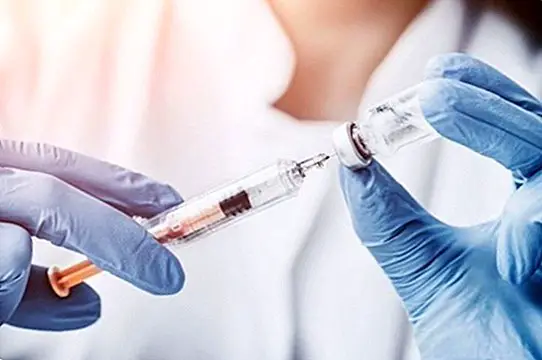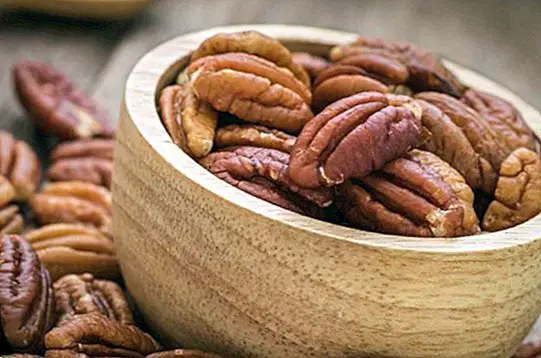Breast self-examination: how to examine your breasts at home
The breast cancer It becomes one of the tumors that tend to worry and frighten many women. For this main reason, and thanks to the fact that if it is detected in time it can be cured in most cases, all precautions tend to be few.
At the time of prevent cancer In general, it is essential and essential to follow a healthy lifestyle, not abusing fatty foods, practicing physical exercise regularly, maintaining an appropriate line according to our height and physical complexion, and not consuming alcohol or smoking.

Regarding your own breast cancerIn addition to passing annual checks that help many women to identify and control the state of their breasts, it is also possible from home to perform a breast self-examination.
An increasing number of medical specialists agree that it is important that women, even when they are in their teens, begin to adopt the habit of examining their breasts, since in this way they can get used to the way they used to. They look and feel normally.
Only in this way, when you get used to it and become familiar with your breasts, will it be much easier for you to recognize some change or something out of the ordinary, which was not previously.
Breast self-exam: how to learn to examine your breasts and why it is so important
The Breast self-examination at home allows you to inspect and palmar your breasts to control their condition and if possible bulges appear, identifying the changes that may occur.
The ideal time to carry out this breast self-examination It's between 5 and 10 days after your period has come.
What is a breast self-examination?
If the woman goes for an annual check-up with the gynecologist for breast examination (and thereby assessing her development and making sure that all changes are normal), breast self-examination helps women detect changes in their breasts, such as cysts or other benign breast problems among the controls.
On the other hand, they may also be useful in helping some women to detect breast cancer, a disease that is detected early enough to be curable in most cases, and which is extremely rare among adolescents.
Carrying out a breast self-exam is simple, quick and easy, which only takes a few minutes.
When is the best time to do a breast self-exam?
The best time to perform a breast self-exam is 5 to 7 days after the start of the menstrual period. In this sense, specialists advise to always choose a fixed day each month when it has already reached menopause.
Since breasts usually change throughout the menstrual cycle, it is important to choose the same time each month.
How to examine your breasts? Step by step guide
First of all, keep in mind that breast self-examination has two important parts:
- How do moms look
- How do moms feel?
1. How the breasts look
Start by analyzing the appearance of your breasts. To do this, stand or sit in front of a mirror with your arms relaxed, located at the sides. Look closely at your breasts. You should look for the following changes:
- Dents
- Wrinkles
- Dimples
- Sunken nipple
- Very porous skin
- Variations and changes in its coloration, contour or shape
Then look at yourself from different angles and positions of the arms. You can keep your hands at your sides, raise your arms above your head, place your hands firmly on your hips and lean forward ...

2. How do moms feel?
It is possible that at first palparte and touching your breasts may seem strange to you.
Lie on the bed face up, placing a pillow or towel under one shoulder. Place your arm under your head and examine your breasts one at a time. For example, if you start with the left breast place the pillow under the left shoulder, raising the left arm, placing the left hand under the head and using the right hand to feel the breast.

Using the tips of the three middle fingers, move the fingers in the form of superimposed circles, moving them up and down from the outside of the breast (under the armpit), towards the middle of the chest, making sure to cover the entire surface.
Examine upwards to the clavicle and down to the bottom of the rib cage. Keeping in mind the last time you examined yourself, notice what you feel normal and what you may feel as different.
You can also use different levels of pressure to feel each part of the breast: it is useful to start with light pressure, increasing at medium pressure and ending with firm pressure. When you have covered the whole breast uses a finger and thumb to compress the nipple smoothly, and observe if any kind of secretion occurs. Then place the left hand under the head, and examine the right breast in the same way.
Steps to perform a breast self-examination: summary
1. Situate yourself in front of the mirror.
2. Relax the arms and keep them parallel to the body.
3. Look at your breasts: look at their shape, on their skin, and whether or not they look like orange peel skin.
4. Place your hands behind your head, and make light pressure with your fingers on the nape of the neck.
5. Look closely at the shape of the breasts. Compare them with the form they had in the previous self-exploration.
6. Lie down.
7. Put a pillow under the shoulder of the breast that you are going to explore.
8. Now place that hand under your head.
9. With the help of the three middle fingers of the opposite hand, press the chest gently in an orderly manner, until you reach the armpit.
10. Also press lightly the nipple to check whether or not there is discharge.
It is ideal that you do this breast self-examination between 5 and 10 days after the rule. A good time is in the shower.
How to learn to examine your breasts
The recommended age to start and learn to perform a self-examination is in adolescence, but if we are not already in this stage of life and we do not know how to examine our breasts then we detail how we can learn.
The exploration should be done a week after the end of menstruation, before menstruation is not advisable since in this period of time the breasts can be inflamed and it is possible to get into confusion.
An appropriate time to perform the self-examination may be the time of the shower.
The exploration can be carried out either standing, sitting or lying on the bed.
- We will start by exploring first one chest and then the other, we will place the hand of the chest that we are going to explore, for example, the right one above the head and with the fingertips of the left hand we are touching gently but exercising some firmness, and patting with the tips of your fingers as if you were playing the keys of a piano.
- Once the exploration of the right chest is done we will do the same with the left chest.
- The self-examination does not only include the exploration of the chest, we must also explore both the armpits and the nipples.
- To explore the armpits we will do it with the arm raised above the head as we did previously in the palpation of the breasts.
- The exploration of the nipples will be done by exerting a little pressure on the nipple and then observe that there is no discharge, we should also observe its appearance with what we will check that the nipple is not sunken.
- The appearance of the skin of the breasts is also important, observing it we can appreciate if there have been changes in the skin of the breasts and nipples.
- Observe and pay attention to the orange peel that may appear around the breasts.
- We will also pay attention to cracks, dryness, itchy nipples, swelling, redness, high temperature of the breasts or sharp pains.

Another way to examine the breasts is to stand naked in front of the mirror:
- We will stand in front of the mirror and observe the appearance of both breasts and nipples.
- We will raise an arm first and observe that the corresponding chest makes the movement lightly, without being heavy and at the same time as the arm.
- We lower the arm and repeat the same steps with the other arm observing the movement of the chest.
- Now we will do it with both arms at the same time, we will lift them observing the movement of the two breasts that will have to rise at the same time.
- If you notice that one of the breasts does not rise at the same time as the other, making the movement more slowly and as if it weighed more could be a sign that something is not going well.
In case of any irregularity you notice or if you notice any of the symptoms described above, go to your gynecologist as soon as possible so that you can carry out the timely review.
Image | Wikipedia This article is published for informational purposes only. It can not and should not replace the consultation with a Physician. We advise you to consult your Trusted Doctor.


